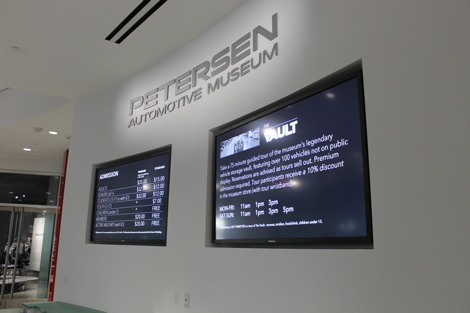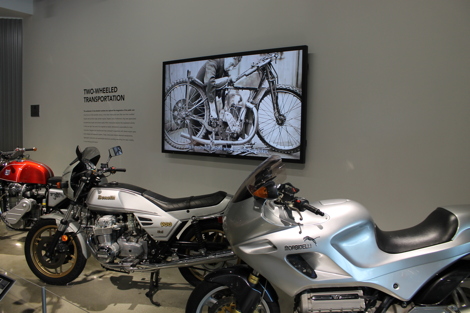Panasonic Helps Petersen Automotive Museum Revamp
Gail Chiasson, North American Editor
We only recently learned about this, but Panasonic played a key role in the renovation of the Los Angeles-based Petersen Automotive Museum, which reopened in December following a 14-month long project that placed significant focus on technology to make the exhibits relevant from an experiential point of view.
Founded in 1994, the museum explores and presents the history of the automobile and its impact on American life and culture using Los Angeles as a prime example. About 150 vehicles are on display at any one time with the other half of the 300+ vehicle collection in on-site storage, awaiting the chance to go on exhibition. Depending on the chosen subject, the rotating exhibits of automobiles from around the world can range from 100% Petersen vehicles to 90% on loan. In addition to single vehicles and multiple vehicle collections, the museum displays rare automobile components, artwork, photographs, books, and automobilia.
Overall, Panasonic installed 15 professional displays and 47 projectors.
“We instantly saw the need for video to become an integral part of the museum experience,” says Adam Langsbard, chief marketing officer of Petersen Automotive Museum. “Rather than recreate dioramas that show a freeze frame of history, we quickly decided we needed a video partner to deliver content in a dynamic, fresh way throughout each gallery.”
The museum integrated video into every one of the 25 galleries across the museum’s three floors, including a 180degree gallery that required projection images to be stitched together via edge blending technology. Due to Panasonic’s flexibility, the museum was able to customize that content and have a flexible configuration for each room.
Beyond the projectors, the displays include, among them: 98″ 4K professional displays; 70″ and 80” full HD professional displays; and
High Brightness professional displays.
Ease of use and installation was important for the renovation. With Panasonic’s HDBase feature DIGITAL LINK — which comes native for all the projectors selected and most of the displays used at the museum — there were fewer things to troubleshoot from an integration perspective. The feature enables transmission of uncompressed HD videos, audio and control commands over shielded CAT6 cable. This allowed for Scenic Route, a global production company tapped to oversee the deployment of the project, to keep native format from the output side to input side without needing additional adapters. As a result, the video distribution was streamlined, which saved the museum both time and money.



Follow DailyDOOH